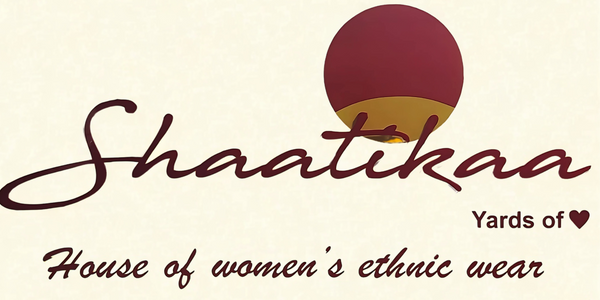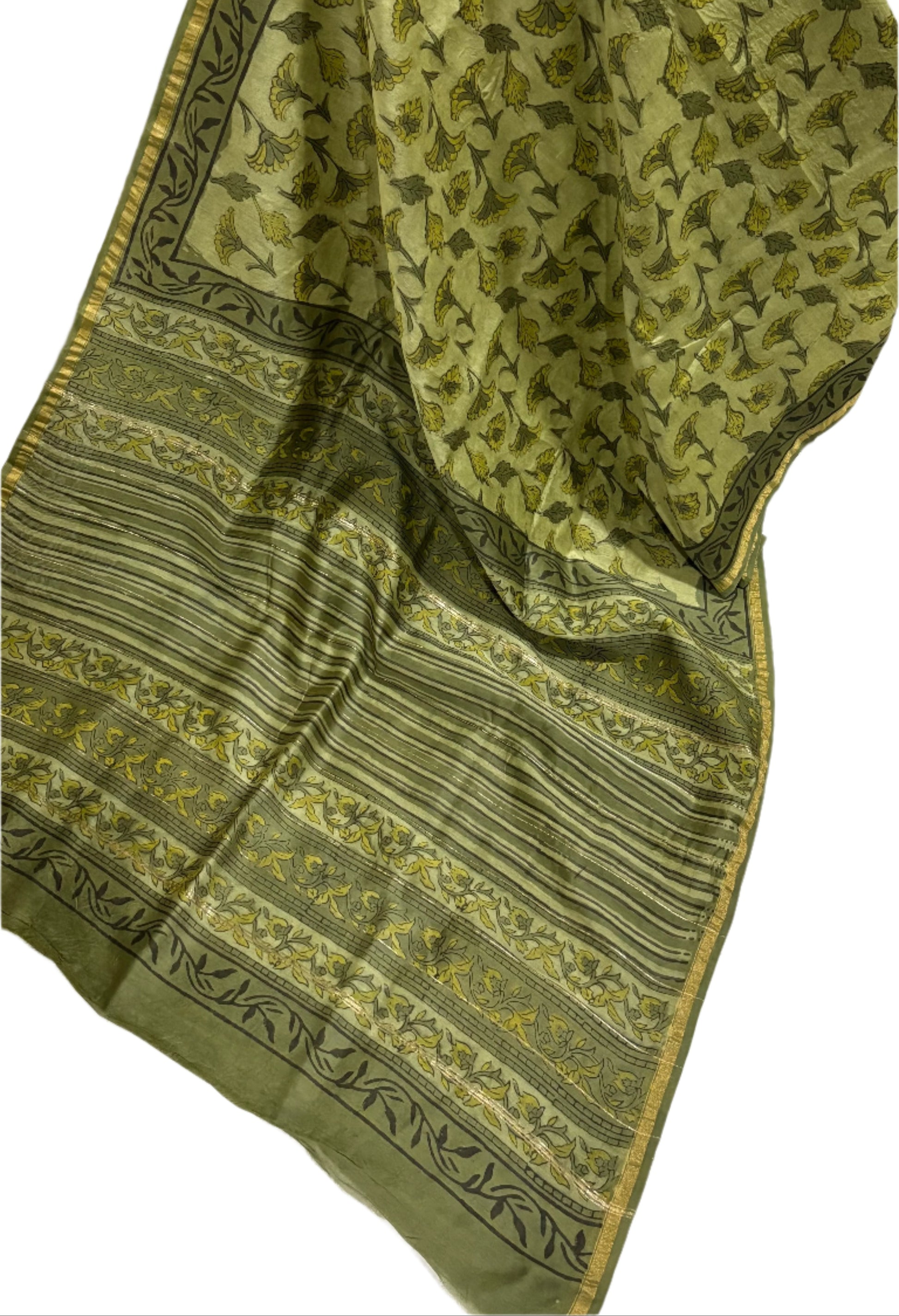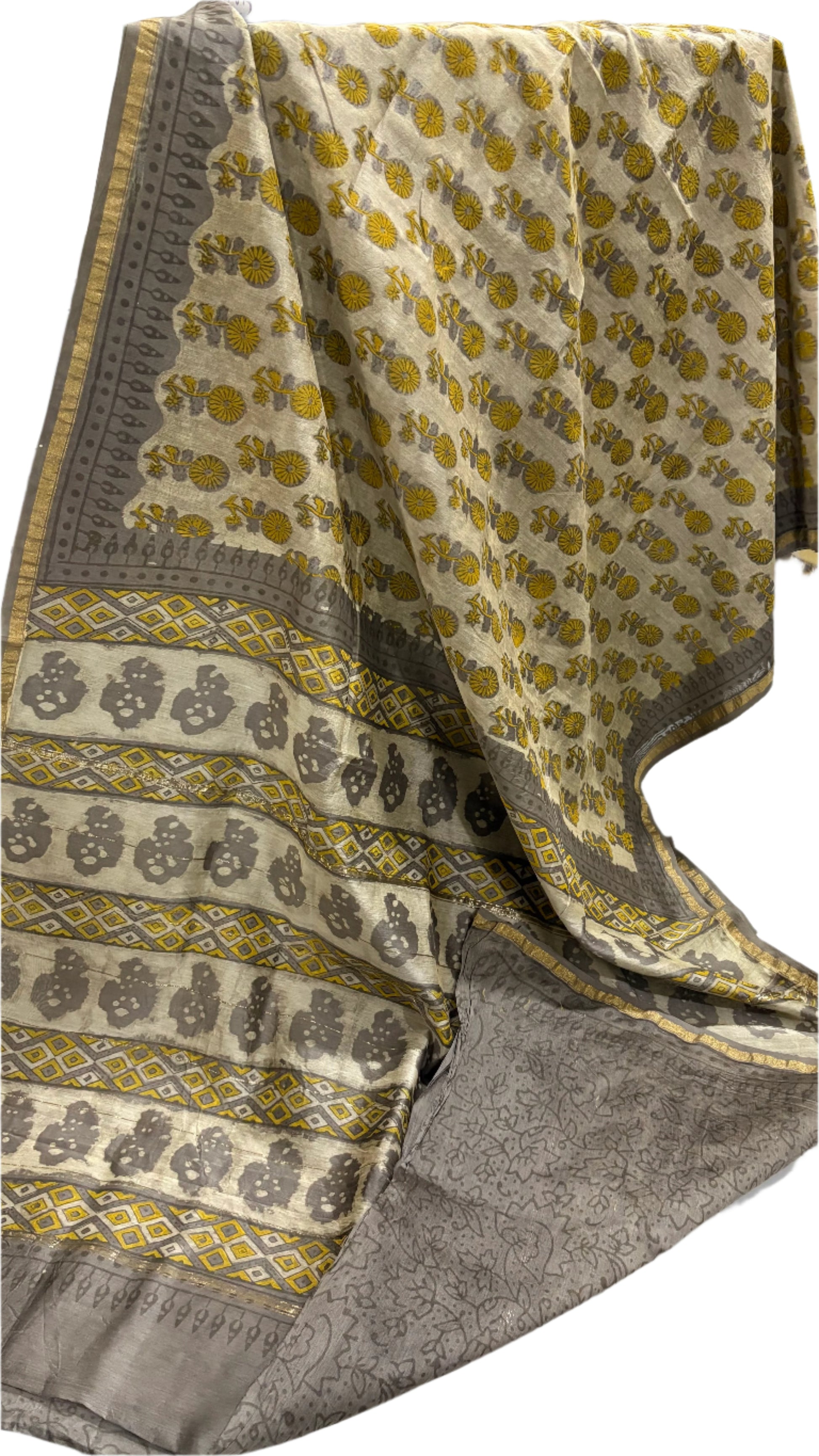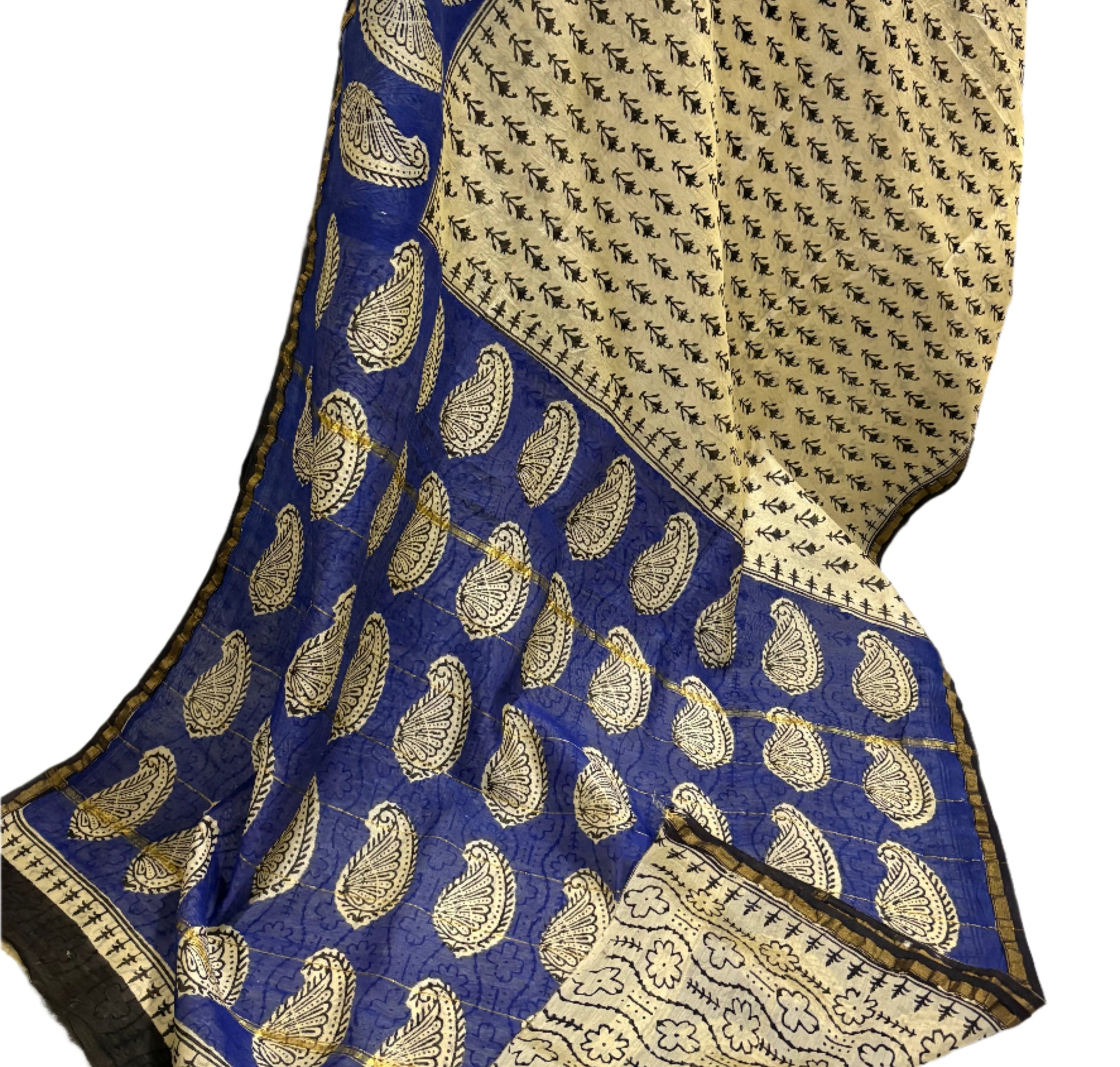Shaatikaa
Mitti Loom Cotton Chanderi Sarees
Mitti Loom Cotton Chanderi Sarees
Couldn't load pickup availability
Dabu print Cotton Chanderi refers to a traditional Indian textile that combines three distinctive elements: 🔹 Dabu Print Dabu is a mud resist hand-block printing technique from Rajasthan, India. The process involves: Applying a mud mixture (clay, gum, lime, and wheat chaff) to fabric using hand-carved wooden blocks. Sprinkling sawdust to dry the mud quickly. Dyeing the fabric—areas covered with mud resist the dye. Washing off the mud to reveal intricate patterns. Common motifs: floral, geometric, traditional Indian patterns. 🔹 Cotton A natural, breathable, and comfortable fabric. Dabu is traditionally done on cotton for summer-friendly wearables like sarees, kurtas, dupattas, and suits. 🔹 Chanderi Chanderi is a luxurious fabric from Madhya Pradesh, traditionally made from a blend of silk and cotton or pure silk. Known for: Lightweight feel Subtle sheen Fine texture Chanderi fabrics with cotton base are preferred for a more matte, breathable finish. So, What is Dabu Print Cotton Chanderi? It’s a cotton-based Chanderi fabric (lightweight and slightly glossy) that has been hand-printed using the Dabu resist-print technique. It blends: Rustic aesthetics of Dabu Traditional elegance of Chanderi Breathability and comfort of cotton
Share
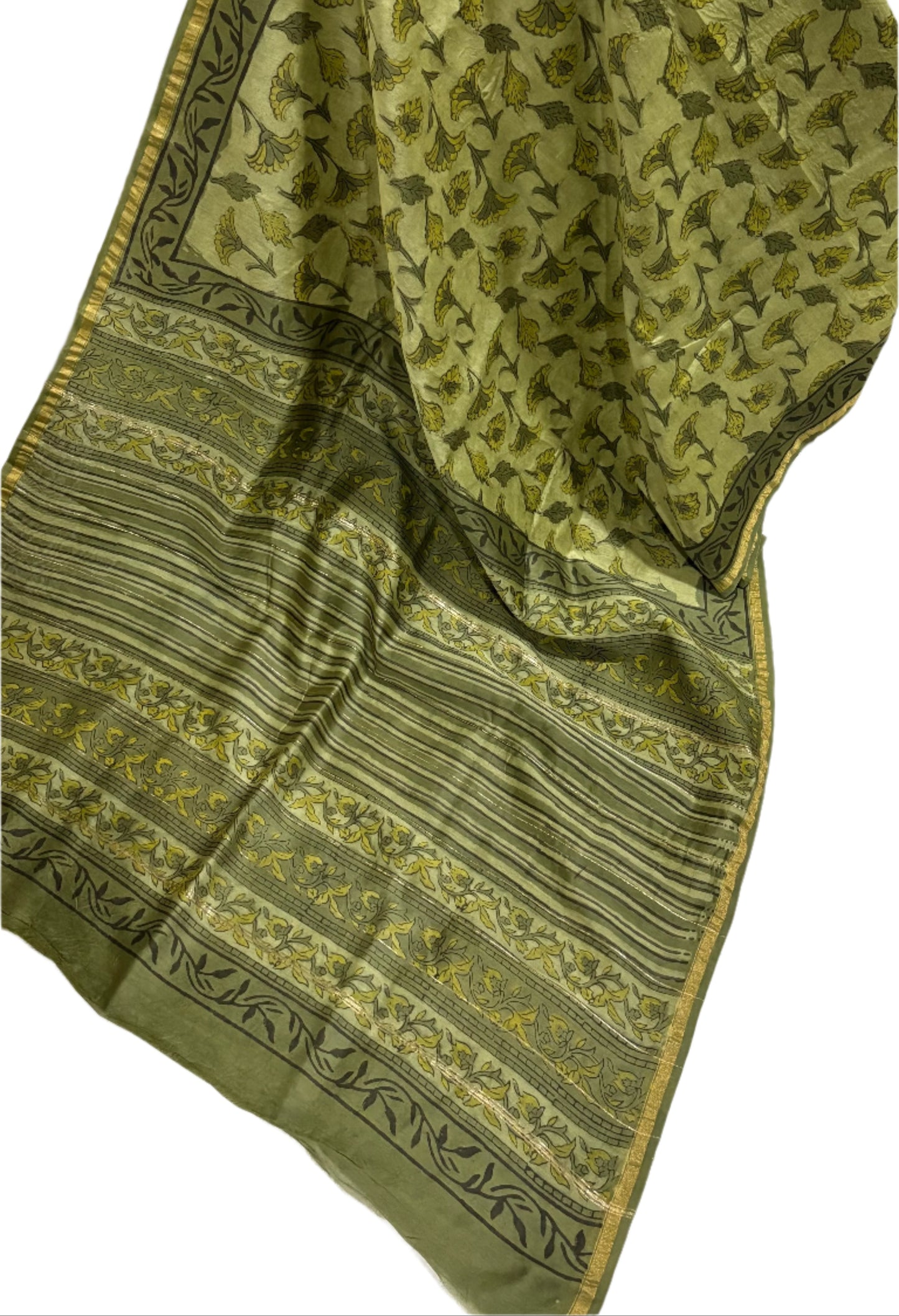
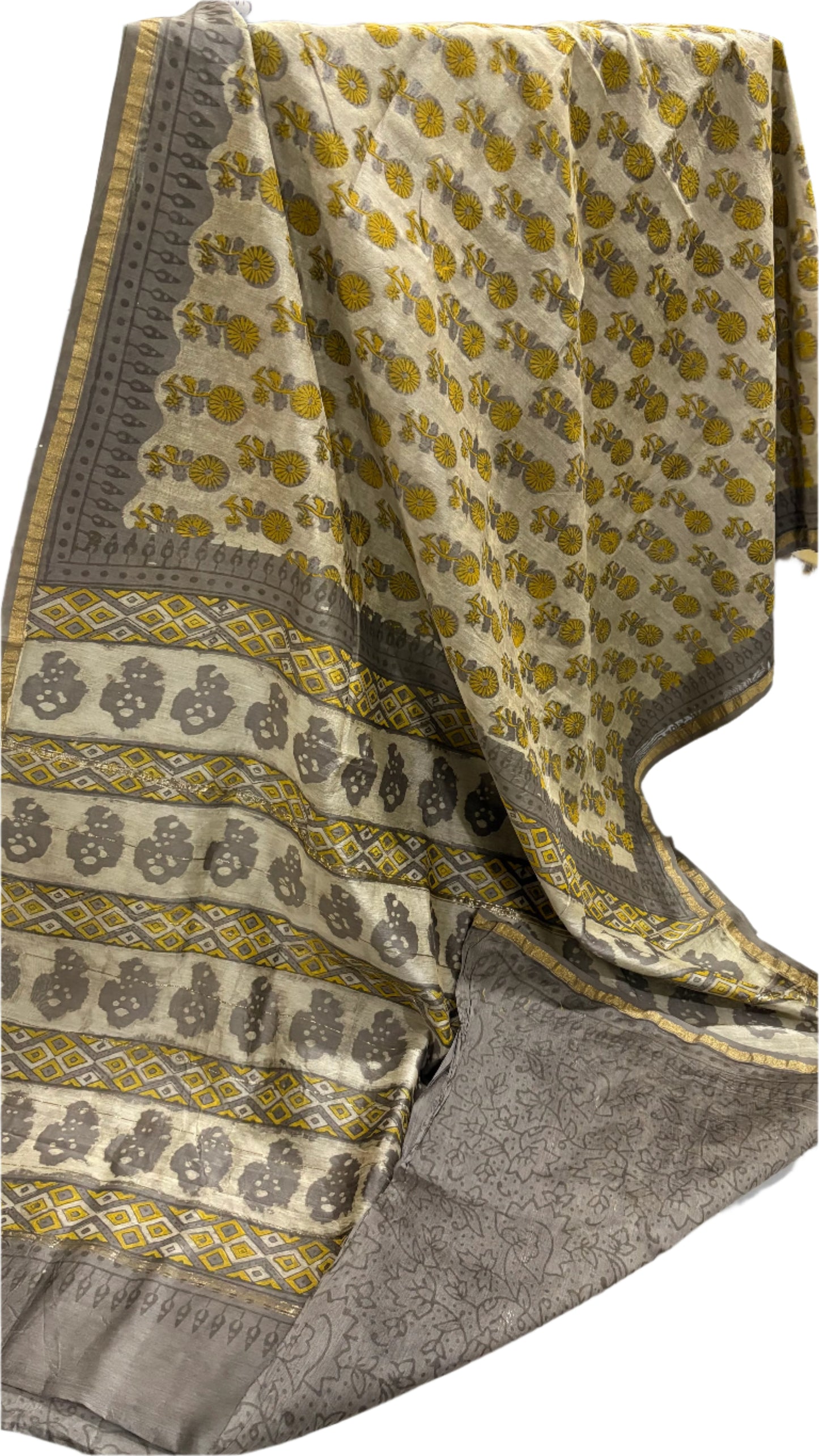
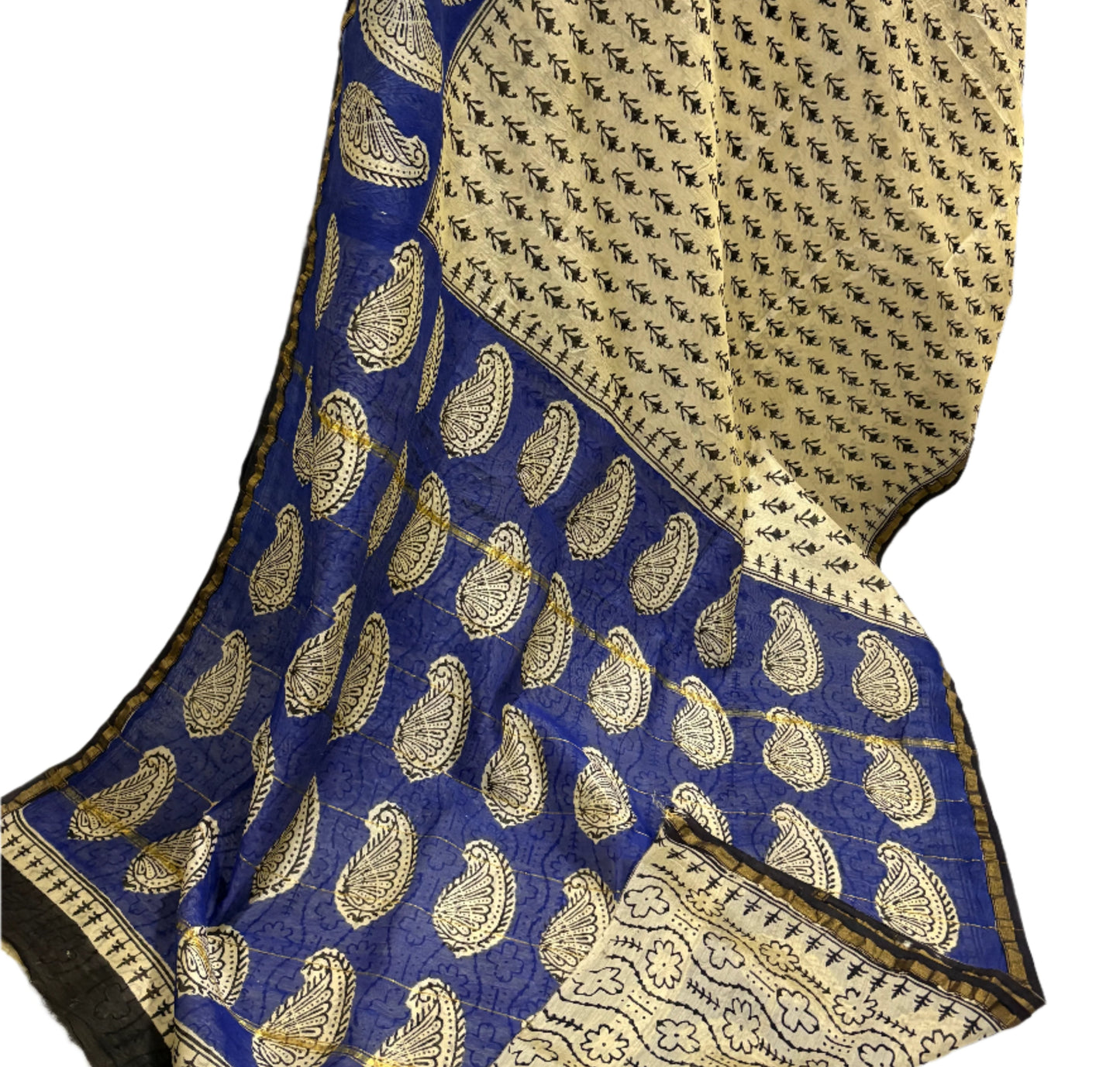
Collapsible content
Product Details
Dabu Print Cotton Chanderi – Fabric Details
🔹 1. Composition
Base Material: Cotton Chanderi
Weave: Traditionally a blend of fine cotton yarn in the weft and non-degummed silk yarn in the warp
Cotton-Rich Variant (70–100%) is used for Dabu printing to improve dye absorption and breathability
🔹 2. Weave Structure
Type: Plain weave or tissue weave
Characteristics:
Smooth, slightly sheer surface
Subtle sheen from silk yarns
Lightweight, breathable, and stronger than pure voile or mulmul cotton
🔹 3. Texture & Feel
Soft and smooth with a slightly crisp finish
May have a mild rustic texture due to the Dabu process
Excellent for warm climates and elegant draping
🔹 4. GSM (Grams per Square Meter)
Range: 50–70 GSM
Feather-light and ideal for layering, especially in ethnic and summer wear
🔹 5. Transparency
Slightly sheer, typical of Chanderi weave
More opaque than silk Chanderi
Lining may be needed for structured garments (e.g., kurtas, dresses)
🔹 6. Printing Technique
Dabu Print (Mud Resist Hand Block Printing):
Applied by hand using traditional wooden blocks
Dyed using natural or vegetable dyes (e.g., indigo, kashish, madder red)
Imperfections are intentional, showcasing handcrafted authenticity
🔹 7. Width
Standard Width: 44–46 inches (112–117 cm)
🔹 8. Shrinkage & Care
May shrink slightly after the first wash – pre-wash recommended
Care Instructions:
Hand wash separately in cold water
Do not soak
Use mild detergent
Dry in shade
Iron on reverse side at low to medium temperature
🔹 9. Common Uses
Apparel: Sarees, kurtas, suits, tunics, blouses, stoles, and dupattas
Home Décor: Curtains, cushion covers, table runners, and rustic-style linens
Craft Applications: Fabric panels, handmade bags, journals, and wall art
Would you like this formatted as a PDF, or need a version with your brand name or logo added? I can also prepare a short product description for online listings or tags.
Fabric Details
Dabu Print Cotton Chanderi
🔹 1. Composition
Base Material: Cotton Chanderi
Weave: Traditionally a blend of fine cotton yarn in the weft and non-degummed silk yarn in the warp.
For Dabu prints, cotton-rich Chanderi (70–100% cotton) is often used for better dye absorption and breathability.
🔹 2. Weave Structure
Plain weave or tissue weave with a smooth, slightly sheer finish.
Characterized by a subtle sheen due to the silk warp, even in cotton-dominant variations.
Lightweight and airy, but stronger than pure cotton voile or mulmul.
🔹 3. Texture & Feel
Soft and smooth to touch with a slightly crisp hand (stiffness may vary depending on starching).
Lightweight, making it perfect for drapes and summer wear.
May retain a slightly coarse or rustic feel due to the mud-resist (Dabu) treatment.
🔹 4. GSM (Grams per Square Meter)
Typically 50–70 GSM for Dabu print Cotton Chanderi.
Very light—ideal for layering and breathable clothing.
🔹 5. Transparency
Slightly sheer due to the Chanderi weave—lining may be required for garments like kurtas or dresses.
More opaque than silk Chanderi due to the cotton content.
🔹 6. Printing Technique
Dabu Print (Mud Resist Hand Block Printing):
Hand-applied with wooden blocks.
Natural dyes (Indigo, kashish grey, madder red) are commonly used.
Imperfections in print are part of the aesthetic and denote authenticity.
🔹 7. Width
Usually 44–46 inches (112–117 cm) in usable width.
🔹 8. Shrinkage & Care
May shrink slightly after first wash (pre-washing recommended).
Care Instructions:
Hand wash separately in cold water.
Do not soak.
Avoid harsh detergents and direct sunlight.
Iron on low to medium heat on the reverse side.
🔹 9. Common Uses
Apparel: Sarees, kurtas, salwar suits, tunics, blouses, dresses, stoles, and dupattas.
Home Decor: Lightweight curtains, cushion covers, and table linens with rustic charm.
Craft Use: Fabric panels for handmade journals, bags, and wall art.
Design and Detailing
Design and Detailing of Dabu Print Cotton Chanderi
🔹 1. Fabric Base
Cotton Chanderi is a lightweight fabric with a slight translucency and sheen.
The cotton in the weave adds softness and breathability, while the Chanderi weave adds a refined, elegant drape.
🔹 2. Print Technique: Dabu
A resist-dye technique using a mud paste made from clay, gum, and other natural ingredients.
After applying the paste with hand-carved wooden blocks, sawdust is sprinkled to set the resist.
The fabric is dyed (usually with indigo, black, or earthy natural dyes) and the mud is later washed off, revealing contrasting, intricate patterns.
🔹 3. Motifs and Patterns
Traditional Indian motifs dominate:
Butis (small repetitive motifs)
Paisleys
Creepers and vines
Floral jaals (mesh)
Geometric blocks and chevrons
Patterns are often imperfect, lending the textile a raw, handcrafted charm.
🔹 4. Color Palette
Earthy tones dominate: indigo blue, mud brown, black, grey, off-white, brick red.
Often dyed in natural or vegetable-based dyes.
Dual-tone effects may appear due to layered printing and overdyeing techniques.
🔹 5. Detailing & Enhancements (Optional)
Zari Borders or Bootas: Especially on sarees or dupattas, subtle gold/silver threads may be woven into the fabric.
Hand embroidery (Kantha or mirror work) may be added post-printing for a boutique-style finish.
Contrast piping or edging in necklines or dupattas.
Tassels or hand-finished hems for a rustic touch.
🔹 6. Texture and Feel
Lightly crisp but soft due to the cotton.
May have a grainy texture from the mud-resist printing.
Has a natural fall and drape, ideal for sarees, dupattas, and semi-structured garments.
Care Instructions
Dry Clean Only
